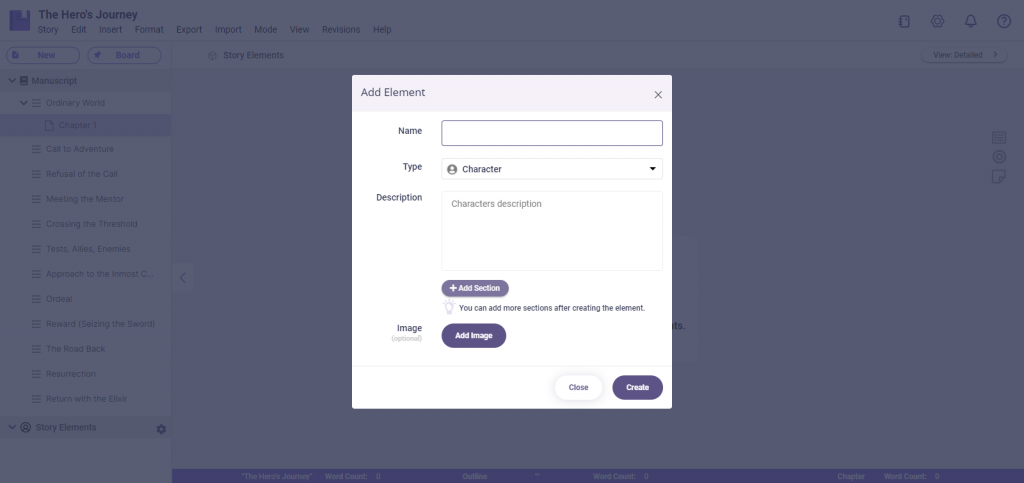A Straightforward Guide on Using a Character Profile Template

Characters breathe life to any novel. Writing characters that many people can relate to is an often sought goal for many writers. It is indeed challenging to write someone that’s larger than life and three-dimensional. That’s why it should do many writers good to look into using a character profile template.
In this article, we will be presenting to you our own guide to writing a character profile and working with a character profile template. These things are more than just notes for your manuscript; they also make sure that your characters are just as human as you are.
Why Use a Character Profile?
Character profiles can be quite unassuming, in that they might not do a lot for your manuscript. However, character profiles actually serve their purpose to you, the writer. Writing a character profile lets you delve into the entire personality of your characters.
As a writer, you need to know your characters inside out. You might know details about your characters that don’t end up going to your final draft, but it’s important to note them down because it makes them lifelike and authentic to you. When the character is alive and kicking in your imagination, you can be confident that you’re writing a well-written character.
How to Write a Character Profile
Any basic character profile template can be easily divided into three parts: the physical appearance, the backstory, and the personality.
The Physical Appearance

This part of the profile actually deals with not just the physical appearance, despite the heading. The main goal of this section is make your character recognizable at a glance.
Of course, it’s important to start with your character’s basic information. Name, age, birthday, height and weight, as well as their job and address easily fill this part. You can then proceed with your character’s physical appearance, like their usual clothing style and wardrobe choices.
It is also important to note the distinctive features of your character. Oftentimes, these are features that you would like to be emphasized to highlight that yes, indeed, this is your character. Common distinctive features are eye color, tattoos, scars, among others. Notable accessories can also be included, like glasses.
It is also important to note the distinctive features of your character. Oftentimes, these are features that you would like to be emphasized to highlight that yes, indeed, this is your character. Common distinctive features are eye color, tattoos, scars, among others. Notable accessories can also be included, like glasses.
Mannerisms and their way of speaking is also covered in this part. Note their idiosyncrasies, the language they use in speaking, and the way they express their emotions. If they tend to use a catchphrase or a specific gesture while talking, write them down in this section. Other basic information like hobbies, skills, interests, and favorites can also fall inside this part.
The Backstory
A person is a product of their environment, and you should exemplify that in this section. Aside from giving an overview of your character’s past, this section can also include significant people like relatives and friends who had an influence on who your character is today.
In the backstory, it’s also obvious that you might write about significant events in your character’s past that shaped them to be who they are in the present. This can be quite important, as you might need to include this in your manuscript at some point.
When talking about a character’s past, it can go past their own childhood/adolescence and talk about the character’s family and friends. What their relationship with their family members were, how they met their longtime friends, and how they communicate to these close people easily falls into this section.
The Personality
This section in the character profile template describes who your character truly is. After experiencing their backstory and showing how they look, you should now delve into their personality. This piece is unsurprisingly the most important, especially for your main characters, as this essentially defines your characters and what sets them apart from your other characters.
Here, you answer basic personality questions, like their strengths, weaknesses, and even their MBTI personalities. You also deal with their approach to several concepts, such as life, death, love, and others. You can also talk about their life goals, ambitions, and dreams.
Of course, you should also talk about the goal that your character attempts to achieve in your story. What motivates them to do this and that in your story? It’s important that you note this, as every plot and character decision-making you have to make falls back to this information. As long as your character stays true to this goal, you can be sure that they won’t go OOC (out of character).
LivingWriter’s Story Elements
All this information can be quite burdensome to keep around, but LivingWriter can easily make that a non-issue with one of our flagship features, the Story Elements. In fact, Story Elements was designed with making character profile templates in mind.
Story Elements allow you to keep notes of story elements, such as characters and settings, that you can easily access while writing your manuscript. There’s no limit for the notes that you can keep, and you can even add images to give you a visual stimulus while writing.

You can easily access Story Elements from the Board. Click on the empty space of the Board or the Add New Story Element at the right side of the screen to pull up the New Story Element dialog. This would prompt you to put in what story element you would like to add, as well as their name, and optionally, an image.
Afterwards, you can then click on the Character Story Element and edit the notes as you ever so please. The notes can be divided into labeled sections, and you can freely stick to the basic “physical appearance, backstory, personality” sectioning. Better yet, you can also divide it into even finer sections as described in this article.
Now, as you write your manuscript, LivingWriter can detect if you are writing about a character. When you follow its prompt, you can see your notes on the right side of your screen. Pretty handy when you want to pull up quick information about your characters, and perhaps a great time-saving feature. We’re quite proud of it ourselves!
The Only Character Profile Template You’ll Ever Need
A character profile can prove to be a valuable asset for writers to write better characters. Character profiles are easily your weapon against the dreaded reader comments about a two-dimensional or flat character (although there’s no true shame in writing one if done well). We hope that this guide helped you be able to write amazing characters for your next hit novel.
Of course, don’t forget to check out LivingWriter and its amazing feature set that’s sure to aid you in writing your manuscript!